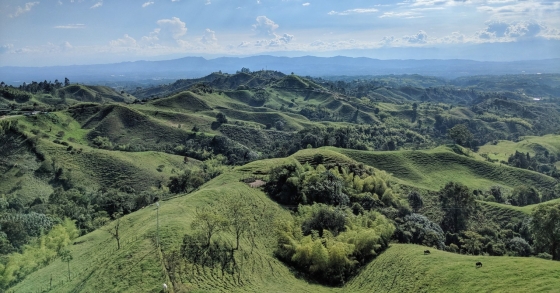Palmira Weather and Climate: A Comprehensive Guide
Palmira has a steady warm climate throughout the year.
It also experiences much rainfall throughout the year.
Let’s explore the climate details in depth to provide you with a complete overview.
Average maximum day and minimum night temperature
With minimal seasonal shifts, Palmira experiences a constant climate year-round. Average daytime temperatures reach a comfortable 25°C in February. In August, the coolest month of the year, temperatures drop to a comfortable 24°C.
At night, you can expect cooler temperatures, with averages dropping to around 15°C during this month. Check out our detailed temperature page for more information.Temperature ranges by month
Precipitation and rainy days
Palmira has a notably wet climate with abundant precipitation, recording 8162 mm of rainfall per year. Despite minor fluctuations, Palmira enjoys fairly consistent precipitation throughout the year. In September, you can expect around 770 mm of precipitation, while in January, Palmira receives about 532 mm.The mean monthly precipitation over the year, including rain, hail and snow
Sunshine over the year
Palmira experiences moderate variation in sunshine hours across the seasons. With 6.4 hours daily sunshine in August, it dips to 4.8 hours in April, offering a balanced mix of sunny and overcast days. Visit our detailed sunshine hours page for more information.Monthly hours of sunshine
Daily hours of sunshine
Average humidity
The relative humidity is high throughout the year in Palmira.
The city experiences its highest humidity in April, reaching 76%. In August, the humidity drops to its lowest level at 71%. What does this mean? Read our detailed page on humidity levels for further details.
Relative humidity over the year
broken clouds and thunder partly cloudy and thunder partly cloudy and thunderForecast for Palmira
Select a Month of Interest
Check the conditions for any month of the year.
The best time of year to visit Palmira in Colombia
The average rainfall figures in Palmira are quite high. Throughout the year, you have a chance of prolonged precipitation. So no matter what time of year you go, you will always have to deal with a high number of rainy days. This makes it more challenging to point out the best time of year to visit. If we needed to pick one month we would choose August which is the sunniest month of the year.Other facts from our historical weather data:
July has an average maximum temperature of 25°C and is the warmest month of the year.
The coldest month is August with an average maximum temperature of 24°C.
September tops the wettest month list with 770 mm of rainfall.
January is the driest month with 532 mm of precipitation.
August is the sunniest month with an average of 191 hours of sunshine.
No idea where to travel to this year? We have a tool that recommends destinations based on your ideal conditions. Find out where to go with our weather planner.




